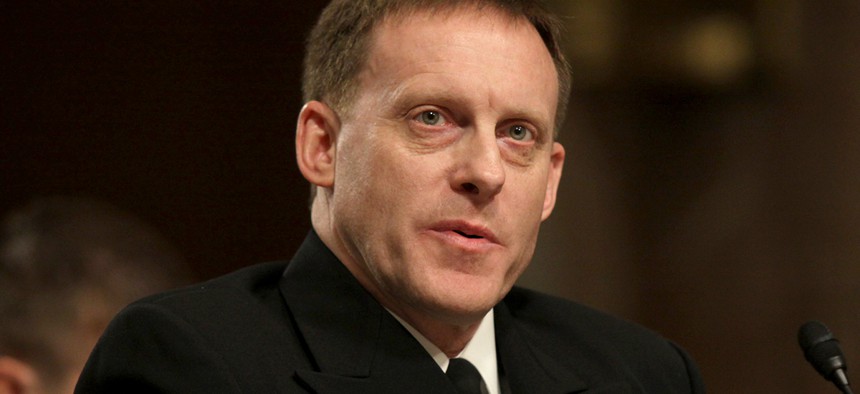To Succeed in Cyberspace, Don’t Forget the Human Element

Adm. Michael Rogers, director of the National Security Agency Lauren Victoria Burke/AP
Adm. Michael Rogers reminded us of the most critical—and challenging—aspect of all cyber operations: “Never, ever forget the human dynamic.”
Ariel Robinson is an independent analyst and freelance writer whose work has appeared in National Defense Magazine, Wonk Report, Defense One and elsewhere.
In his speech to the National Press Club yesterday, Adm. Michael Rogers reminded us of the most critical—and challenging—aspect of all cyber operations. While the technical elements are important, he said, “Never, ever forget the human dynamic.”
Since Rogers became director of the National Security Agency, chief of the Central Security Service and commander of Cyber Command in April 2014, he has been in the unenviable position of leading the institutions tasked with protecting our nation’s data and networks at a time when threats have been growing, budgets have been shrinking and incidents ranging from Snowden to the Office of Personnel Management hack continue to chip away at the public’s trust.
To succeed in cyberspace, whether as part of a CYBERCOM’s offensive or an NSA information assurance mission, Rogers reminds his teams, “Don’t forget that at the end, you're dealing with a choice that some human made on a keyboard somewhere.”
» Get the best federal technology news and ideas delivered right to your inbox. Sign up here.
Those humans can be divided into three segments: protectors, adversaries and end users. But that’s where the simplicity ends.
The protectors, or, more formally, members of the Cyber Mission Force, are already being deployed despite incomplete teams. You would never send out a fighter squadron with five out of 24 planes, Rogers said, but we’re doing just that for cyber teams because of growing, urgent demands for technical capability and expertise. Full operational capability is expected by Sept. 30, 2018.
It almost feels like NSA is becoming the Federal Emergency Management Agency of the cyber world, he joked.
“If you had told me that as a military leader, that as the director of the NSA, I would be involved in protecting a motion picture company, I would have told you, ‘Boy, I don’t think that’s going to come up,’” he said, referring to the Sony hack in 2014. “I failed to anticipate that one miserably.”
Those adversaries were linked to North Korea, but it’s not always that simple. In February, NASA was hacked by a group called AnonSec. The breach was fairly inconsequential, but the motive behind the attack—which seems to little more than “because we could”—represents the challenge of today’s shifting threat landscape.
“This is the one mission set I can think of,” Rogers said, “where every single user out there is both a potential point of advantage and a potential point of vulnerability.”
And therein lies the biggest challenge. When it comes to our nation’s networks, the largest threat to security isn’t the technology; it’s the people who use it.
“We don't give weapons to everyone in the [Defense Department],” Rogers said, but we do give them a keyboard. “You may have the greatest technical solution in the world about how you defend a system, [but] bad user behavior, bad choices, start to make your defensive abilities really challenging.”
That’s exactly what happened to the Justice Department earlier this year, when a hacktivist gained access to thousands of records after simply calling the help desk.
While the exact numbers depend on whom you ask, experts agree a majority of information security breaches are the results of sometimes malicious, but usually inadvertent, insider actions. Strong leadership helps, Rogers said, but ultimately, “it’s about making sure … individual users understand that [their choices] have broader impact.”
NEXT STORY: What’s Key to Driving Better Citizen Experience?


